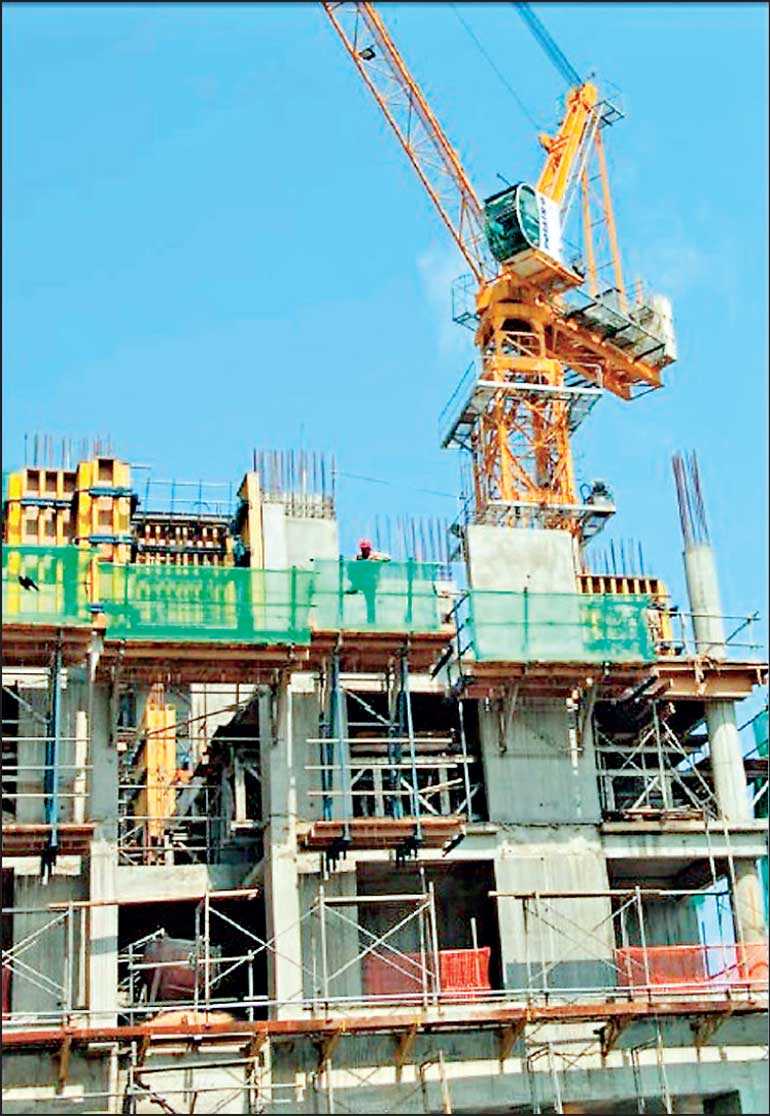Friday Dec 19, 2025
Friday Dec 19, 2025
Thursday, 30 April 2020 00:00 - - {{hitsCtrl.values.hits}}

By Chandani Kirinde
The Health Ministry has issued guidelines to the Building and Construction Industry in response to the COVID-19 outbreak with strict rules to be followed at worksites, in recruitment of workers and at their places of accommodation.
The guidelines are to be followed when the restrictions in place to prevent the spread of the coronavirus will be eased from 4 May for most sectors, including factories, construction enterprises, etc.
As part of the workforce arrangements, the construction industry has been asked to take every effort to run the worksite with only resident workers, and not to employ workers from outside, as this will promote transmission of the disease, while workers residing inside should be instructed not to go out unnecessarily.
If workers are brought from outside in unavoidable circumstances, the management has to ensure that those having fever, with or without acute onset respiratory symptoms such as cough, runny nose, sore throat and/or shortness of breath, those who have had contact with a suspected or confirmed case of COVID-19 for the last 14 days, and those who are quarantined for COVID-19 do not report to work.
Anyone entering the premises, both visitors and workers, should wash their hands with soap and water before entering, or alternatively, hand rubbing with alcohol-based hand rub (minimum 70% v/v Alcohol) can be adopted.
Where fingerprint scanners are used to mark attendance, they should be disinfected before and after each shift, and as additional optional measures, to have a foot bath (with 0.1% sodium hypochlorite solution) at the entrance, or remove shoes at the entrance and provide a separate set of shoes to be used inside the premises. The management will also have to check temperatures of all the staff at the time of entrance to the workplace, and any person recording a temperature above 98.4° F or 37° C should be re-checked after 10-15 minutes of rest, and if positive for second time, be sent back.
Physical distancing too must be maintained at work sites, with workers kept at least one meter apart, the Health Ministry said, adding that while this will be challenging for many, it is a key measure to minimise the spread of COVID-19.
The Health Ministry also advises to limit the number of workers to the minimum required as much as possible, arrange shifts to reduce the number of workers onsite at any given time, and establish specific walkways through the construction sites to maintain physical separation.
The lunch breaks and tea breaks are to be given in a batch-wise manner to prevent overcrowding in the canteen/meal room, and as the minimum distance of one meter is to be maintained among persons in the canteen, the furniture should be arranged to encourage this.
Sharing of glasses, plates, and other utensils during meals must be avoided and meals/food/ beverages served in buffet style must be served by dedicated person(s).
The Health Ministry encourages that meetings at work sites be held in wide open spaces to enable workers to keep the required physical distance of at least one meter, limit the number of workers in the hoist/lift at any one time, promote the use of staircases, and postpone non-essential training.
The management has also been advised to ensure that site amenities, including meal rooms, site offices, changing rooms, toilets, and washrooms be cleaned as per the guidelines.
The Health Ministry also said that non-essential visits to the workplace should be cancelled or postponed, and deliveries and visitors who need to come to the worksite should be given clear instructions of the health requirements while they are in the site and should be monitored.
The guidelines have been issued by the Directorate of Environmental Health, Occupational health and Food safety of the Ministry of Health and Indigenous Medical Services.